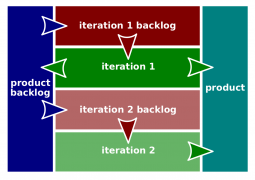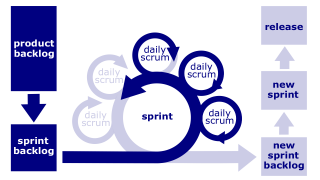Agile Career Projects
Agile Career Projects (hereinafter, the Lectio) is the second lesson part of the Career Endeavors lesson that introduces its participants to career projects and related topics.
This lesson belongs to the Introduction to Careers session of the CNM Cyber Orientation. The Orientation is the second stage of the WorldOpp Pipeline.
Contents
Content
The predecessor lectio is Career Waterfalls.
Key terms
- [[]].
- Agile methodology. The project administration approach of developing the deliverable in frequent iterations based on the requirements that evolve based on the results of previous iterations. The Agile methodology is characterized by frequent reassessment and adaptation of initial objectives. Instead of once-defined projects in the Waterfall model, the Agile methodology encourages continuous re-definition based on continuous feedback. This feature makes the Agile methodology instrumental in those developments that are as inherently unpredictable as most of the career projects are.
Script
- With regard to career projects, an Agile methodology is the approach of developing the result in frequent iterations based on the requirements that evolve based on the results of previous iterations. The Agile methodology is characterized by frequent reassessment and adaptation of previous objectives. Instead of once-defined requirements in the Waterfall model, the Agile methodology encourages continuous re-definition based on continuous feedback. This feature makes the Agile methodology instrumental in those developments that are as inherently unpredictable as most of the career projects are.
- Agile career projects shall be completed in several iterations, which can also be called sprints and scrums.
- The results of each iteration shall be used to setup objectives for other iterations. So, instead of one huge and costly project without clear understanding of its outcome, the Agile methodology offers many smaller trials and, sometimes, fails in order to clarify objectives while on the way.
- Let's add some real life example; just the name is changed to preserve the privacy. Meet Mary, who decided to become an accountant. She was enrolled into the accounting program at the college. After the first semester, in the tax season, she could have started looking for a job of an entry-level bookkeeper. If it is not the tax season, she could volunteer as a manager and or bookkeeper, so she would test whether those fit her vocation. She will put her hands on something she dreamed about and have a feeling whether she wants to continue or do something that in the Agile methodology is called "pivot."
- Mary combined her work and study to her graduation. In 4 years, Lisa had a 4-year degree, 3 years of experience and an actual job.
- The most important feature of the Agile is that a big project is chunked in many smaller ones and results in one can define objectives for another.
Job Search Map is the successor lectio.


